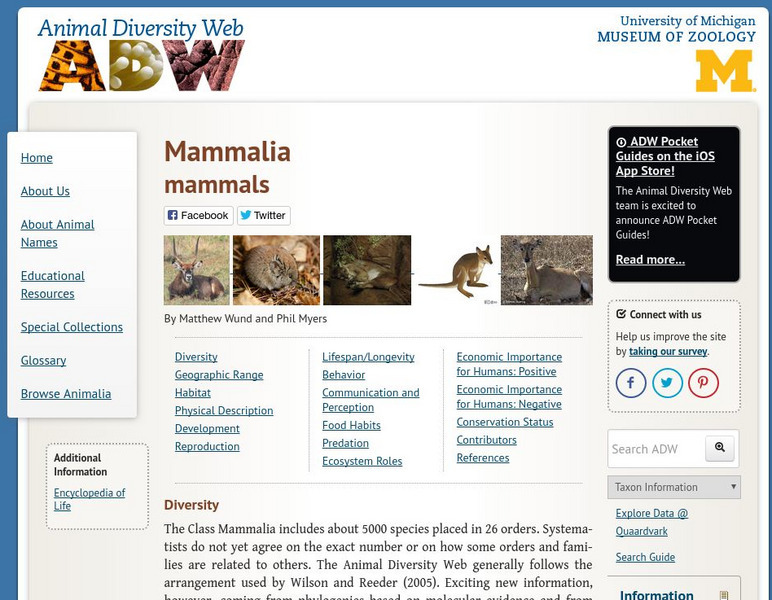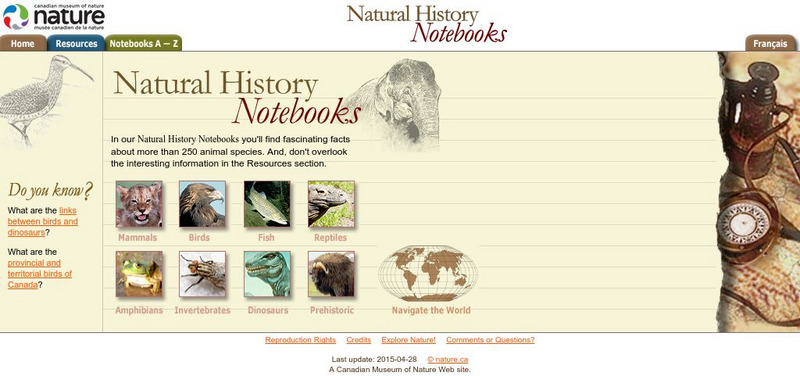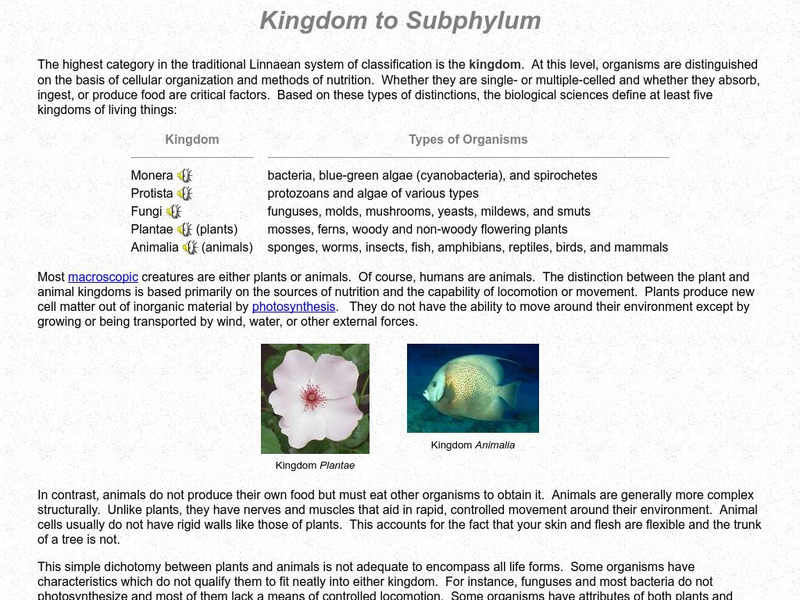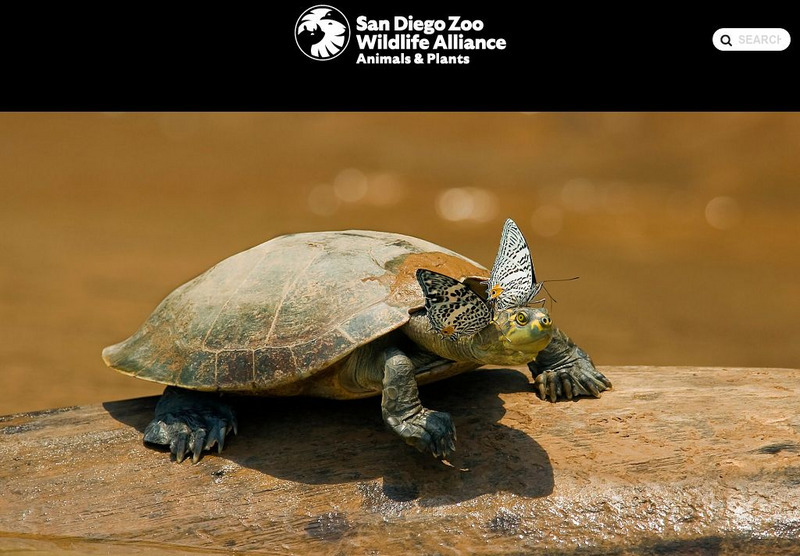Lee County High School
Clay Animal Whistles
Investigate North Carolina pottery history by creating clay animal whistles, a traditional leisure activity in the region. They research a particular animal and jot down its attributes to include in their project. Find step-by-step...
McGraw Hill
Arthropods
Are spiders related to crabs? Study the order of arthropods with a reading selection about animal diversity. It provides details about each class within the order, as well as vivid pictures and explanatory charts.
Curated OER
What Are Cells?
Energize the cells of young biologists with an edible life science activity. Engaging students in exploring the inner workings of plant and animal cells, this activity involves using colored jello and various sweet and...
Consortium for Ocean Science Exploration and Engagement (COSEE)
Fish Morphology
Life comes in all different shapes and sizes, and fish are no exception. Here, young scientists create fish prints as they learn how specific characteristics allow different species to survive in their particular habitats.
Physics Classroom
The Physics Classroom:characteristics of a Transmitted Pulse
A reference page that explores boundary behavior of waves with an animation and examples.
Earth Life
Wonderful World of Insects: An Introduction to the 32 Orders of Insects
A very thorough look at the world of insects. This site examines the 32 orders of insects and gives a complete explanation of the characteristics of each order. Text is supplemented with pictures.
BiologyWise
Biology Wise: Classification and Characteristics of Rotifers
Outlines the classification hierarchy of the phylum Rotifera and describes their characteristics and anatomy. Rotifera have survived for up to 80 million years and continue to play an important role in ecological systems.
Regents of the University of Michigan
Animal Diversity Web: Mammalia
For an overview of the anatomy and characteristics of mammals, visit this Animal Diversity Website. Discusses characteristics not found in other animals, the function of their hair, and their production of milk.
Biology 4 kids
Biology4 Kids: Animal Systems
An overview of the structure and function of a complex, multicellular organism. This article discusses levels of organization and examples of systems.
University of Wisconsin
University of Wisconsin: Amphibian Embryology Tutorial
This amphibian embryology tutorial takes an in depth look at the question "Why study amphibians?". Through this tutorial students will develop a better understanding of vertebrate development.
Canadian Museum of Nature
Canadian Museum of Nature: Natural History Notebooks
This site from the Canadian Museum of Nature, a natural history museum, provides short information blurbs and fun facts on over 240 different common animals categorized by type (mammals, fish, reptiles, invertebrates, amphibians,...
Other
The Domains and Kingdoms of Life
This site is a description of the history behind the 5 Kingdom system suggested by Robert Whittaker. An extensive list of resources is included.
National Institute of Educational Technologies and Teacher Training (Spain)
Ministerio De Educacion: El Reino Animal
Learn about the animal kingdom including an in-depth look at body characteristics, reproduction, types of cells, ways they obtain food, and evolutionary relationships. Many illustrations and nine interactive activities are included.
World Wildlife Fund for Nature
Wwf Global: Mysterious Carnivore Discovered in Borneo's Forest
In December 2005 an animal was discovered in the mountainous region deep in the heart of Borneo. This carnivorous species is suspected to posses characteristics similar to a cat or lemur. Learn more about this mysterious creature here.
PBS
Nh Pbs: Nature Works: Marbled Salamander
The marbled salamander lives in forests and woodlands in the eastern part of the United States, where it is an endangered species in certain states. Students and teachers will find the content to include a look at the species' life...
University of California
Ucmp: Introduction to Chordata
This site from UC Berkeley is an excellent site about the animal phylum chordata. Click on various sections to learn more, covering topics such as the fossil record, life history & ecology, systematics, and morphology. This site is a...
Palomar Community College District
Palomar College: Kingdom to Subphylum
The highest category of taxonomic classification is the kingdom. This website from Palomar College presents the five kingdoms in an easy-to-read chart and discusses the Animalia and Plantae kingdoms in depth. After reading through the...
Purdue University
Purdue University: Elements, Compounds & Mixtures
Provides definitions and characteristics of elements, compounds, and mixtures, and gives an animated image of each.
San Diego Zoo Global
San Diego Zoo: Turtle and Tortoise
This resource provides detailed information about turtles and tortoises, as well as several pictures and an audio clip.
San Diego Zoo Global
San Diego Zoo: Hippotpotamus
This resource presents detailed information about the hippotpotamus, including several photos and an audio clip.
Wikimedia
Wikipedia: Mammal
Wikipedia, an open-source encyclopedia, provides great information on mammals. Content includes a look at mammal characteristics, origins, classification, and more.
Chicago Zoological Society
Chicago Zoological Society: Zoo Explorer: Amur Leopard
In addition to quick facts, the Brookfield Zoo provides an overview on the social and eating habits, appearance, habitat, and other characteristics of the endangered Amur leopard.
Biology 4 kids
Biology4 Kids: Anemone and Coral the Cnidarians
An overview of the Phylum Cnidaria highlights the general characteristics of these strange creatures from the Animal Kingdom.




















